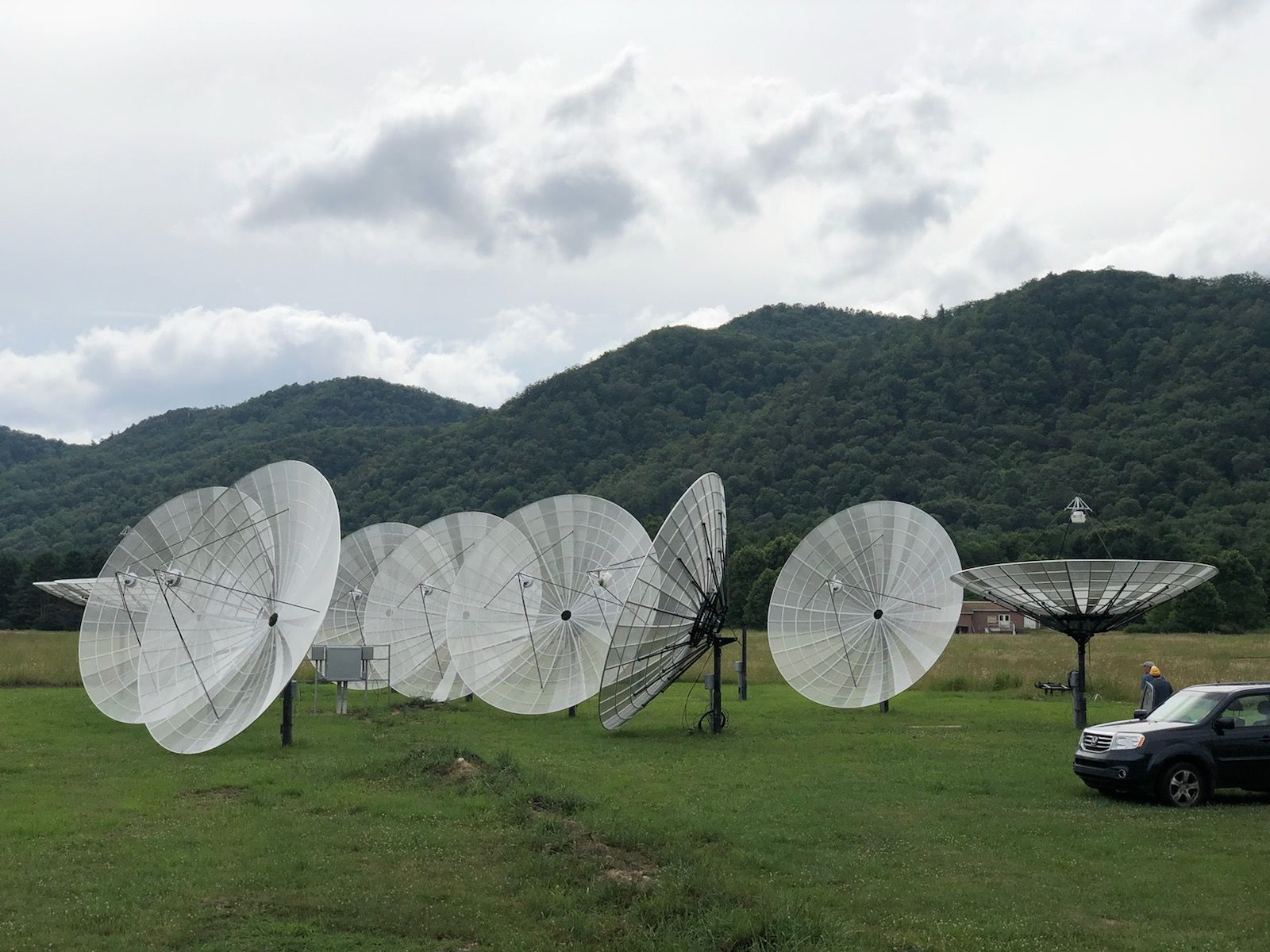Instructional video - Demonstrates steps for calibrating the horn telescope.
Some preliminary pointers:
-
For the best results, after starting the program, allow the system to warm up for approximately 20 minutes before calibrating.
-
Re-calibrations can be done any time during a viewing session.
-
For consistency, it is recommended to re-calibrate occasionally during a viewing session.
Procedure
-
Point the telescope toward the ground. The video above shows how this is done.
-
Switch the
Spectrum DisplaytoHot Calibration. -
Select the
Time IntegrationtoLong Integration. -
Watch the spectrum displayed. You may need to change the
ymaxvalue so that all of the signal is visible on the graph. Wait for the graph to settle to a steady display. Then switch theSpectrum DisplaytoCold Calibration. DO NOT MOVE THE TELESCOPE UNTIL THE SPECTRUM DISPLAYED HAS BEEN CHANGED TOCold calibration. -
Switch the display to
Cold Calibrationand the integration toShort Integration. -
Point the telescope at open sky. Continue to re-direct it until you find a patch of sky that does not show any hydrogen peak near 1420.4 MHz. After doing so, switch to
Long Integration. -
Wait for the graph to settle to a steady display. Then switch the
Spectrum DisplaytoSpectrum with Calibration. DO NOT MOVE THE TELESCOPE UNTIL THE SPECTRUM DISPLAYED HAS BEE CHANGED TOSpectrum with calibration. -
The spectrometer is now calibrated, and the graph should now be showing only signals from the galaxy.
Some More Things to Note:
-
After completing a calibration, the signal is in units of Kelvin (K). This sounds odd, but it is how radio astronomers quantify radio signals. (For most amateur applications, it is not necessary to get bogged down trying to understand why the units are Kelvin.)
-
After completing a calibration, the baseline signal would theoretically be steady at approximately 10 K, which is the approximate temperature of empty space. However, in reality, the base level after calibration will drift up and down. This is due to several factors, but it is mostly due to the LNA because its temperature will fluctuate some over the span of a viewing session.
-
The background level can actually go negative! No need to worry. Re-calibrating usually takes care of this and brings the base level back up to approximately 20 K. Also, the
y-minvalue can be adjusted to negative values. -
The value of the background level will not affect any peak positions or shapes.
-
Even though the background level might not stay the same, the calibrated spectrum can still be used for quantitative analysis by offsetting the data so that the background level is zero. This is typically what is done when analyzing the area of the peaks.
